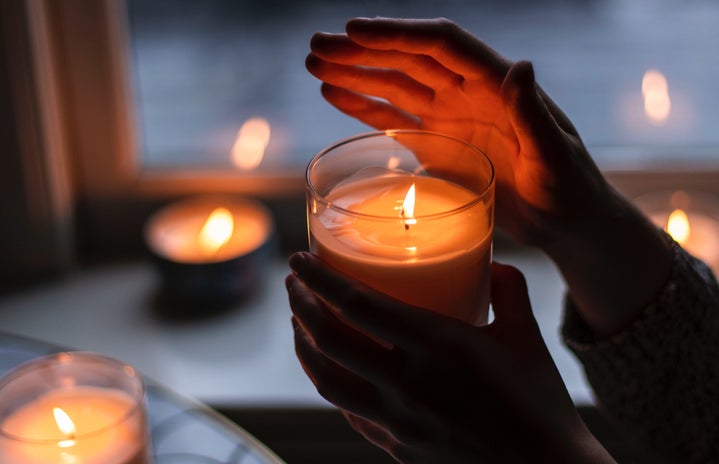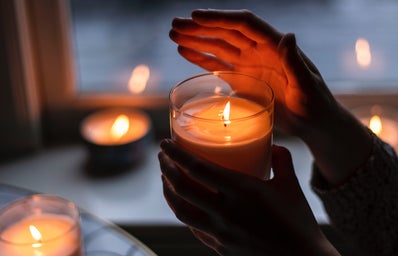If you’ve lived in Puerto Rico long enough, you know that power outages are nothing out of the ordinary. I mean, 3 out of 7 days in a week will be met with darkness in the homes of many inhabitants on the island.
For a lot of Puerto Rican residents, it’s already become all too common for them to face the same troubles on a near-daily basis, including trying to fix the damage done by Hurricane Mariaーdespite the 4 years that have transpired after the environmental crisisー, dealing with a pandemic that has forced many to have to work and/or study from their homes, and having to cope with the fact that our power grids are totally unreliable. In the event of a tropical storm, we might just have to wait two to three days for our lives to return to a certain level of normalityーgiven that even a little shake (or microseism) is enough to knock out the whole power system that supplies energy to more than 1 million establishments and houses.
Was our electrical power system always this bad? From what I remember, the answer’s a simple “no”. I recall having to turn on a lantern every now and then for a couple of hours as a kid, but it definitely wasn’t often. The truth of the matter is that there have been plenty of recent natural events that have led to the inefficiency of the island’s power-supplying infrastructure. Amongst these, we’ve faced the aforementioned Category 4 Hurricane Maria, the continuous earthquakes that started taking place at the start of 2020, and the massive seaweed invasions that have obstructed the flow of clean water to the island’s main power plants condensers.
Although it is true that all of these events played a role in the development of our current situation, the one that had a larger impact was, by far, the Hurricane.
Hurricane Maria and its consequences
Maria, a category 4 hurricane, reached our shores on the 20th of September in 2017, leaving the whole island in total darkness, claiming the lives of approximately 4,000 people and severing telephone and wireless communications amongst the vast majority of the Puerto Rican citizens and their family members. I vividly remember stepping out of my front door and not being able to recognize the landscape in front of me. Only nothingness stood where trees used to grow tall, the land was completely stripped of its natural beauty, and all the wooden houses that populated the hills nearby were completely destroyed. During the days following the hurricane, people would stand outside of what used to be their houses, waiting for someoneーanyone, reallyーto come help them. Many people spent months, and some way longer than that, to regain their electrical power. While most people resorted to buying power plants after this devastating event, others gathered around the light of a single lantern while their only source of entertainment was the battery-powered radio they had sitting in a corner of their room.
The federal agency FEMA was assigned the task of helping our country rebuild what we had lost. Financial support from the US government and a variety of humanitarian organizations was also provided to our administration to help aid amidst the wake of all the chaos and destruction. Food, water, and other necessary goods were handed outーalthough many people living in the center of the island were ultimately forgotten. To make matters worse, it was later found out that the government had valuable goods stockpiled in some scattered warehouses that were never actually distributed. Although some houses were rebuilt, MANY people did not receive the services they needed for months on end. It may be quite hard to believe, but some people still wake up to see a blue tarp above their head first thing in the morning, as soon as they wake up. Last but not least, our power grids were patched up. Literally. In other words, they were not actually restored; meaning that any environmental or weather-related disturbanceーincluding falling branches, insect infestations, and even short stormsーcan leave a whole chunk of our population without electricity. Nothing was actually fixed; it was just made to look like it was.
From PREPA to LUMA
Now that we have stated the natural occurrences that have affected our electrical system, it’s important we acknowledge the fact that most of our problems stem from various factors. Amongst these, there’s inefficient management of funds and a lack of implementation of a proper plan that secures that our power plants will be fixed, remodeled, or rebuilt in a way that can guarantee the sufficient generation of electricity that we Puerto Ricans so desperately need.
PREPA (also known as the Puerto Rico Electric Power Authority) is (or was, up until fairly recently) our power generating company, established in 1979. However, the organization has been using the same power plants and grids that were acquired since the establishment of the company. Essentially, we depend on very antiquated infrastructure to power the whole island. Now, it would be easy to say that they should just ask for funds in order to fix the problem, but this agency had already declared bankruptcy back in May of 2017. Additionally, rebuilding the electrical power system will require billions of dollars; and, not to mention, a lot of time.
Even though the U.S. government has provided approximately 10 billion dollars assigned to the rebuilding of the island’s power infrastructure, we can’t really use that money until PREPA presents a solid action plan on how we are going to tackle achieving this project. Meanwhile, a new character entered the scene of the whole ordeal during June 2021: LUMA. This company was initially hired via contract for 15 whole years, and they have been put in charge of the transmission and distribution of electricity through our power lines shortly after. The generation of said electricity, though, is still in the hands of PREPA. Now, this LUMA agency isn’t cheap at all. It will cost the government about 125 million dollars annually if the contract is indeed fulfilled up until its 15-year termination. That’s a total of 1,875,000,000 dollars. Have we seen any results with this new agency yet? Well, come to think of it, not really.
Our Current Situation
Luma has been working on our power grid for a while now, and even though it offers online payment methods, a website with what appears to be legitimate information, an app, and a telephone line created for customer service and assistance, the power outages have been constant in the sense that they happen quite often, and that they usually last for hours at a time. Because of this, students usually have no choice but to go to their campus in order to complete their academic assignments or depend solely on their hotspot to continue working from their homes. On the other hand, many families have to throw away spoiled food due to the lack of proper refrigeration. People that depend on electricity for their survival have to bite the bullet and spend large sums of money in order to keep their power generator running.
Recently, there have even been “planned” outages due to insufficient voltage (yep, this was the first time many of us have even heard of that being a thing). As of 3 days ago, I actually had an experience in which half of my houseーmind you, my house is relatively smallーdid not receive enough voltage in its power outlets. For this reason, I couldn’t turn on my bedroom fan (much less my AC), or even my lamp.
Considering everything, there are people who blame LUMA, people who blame PREPA, and then there are people who blame both agencies. Taking into account that PREPA is in charge of generating energy and LUMA of distributing it, it’s easy to see how this can be a complicated situation when it comes to pointing fingers.
Sadly, our power grid will keep acting up until we completely reconstruct and remodel the whole island’s electrical infrastructure. For now, there’s nothing else left to do but to wait.
See also:


